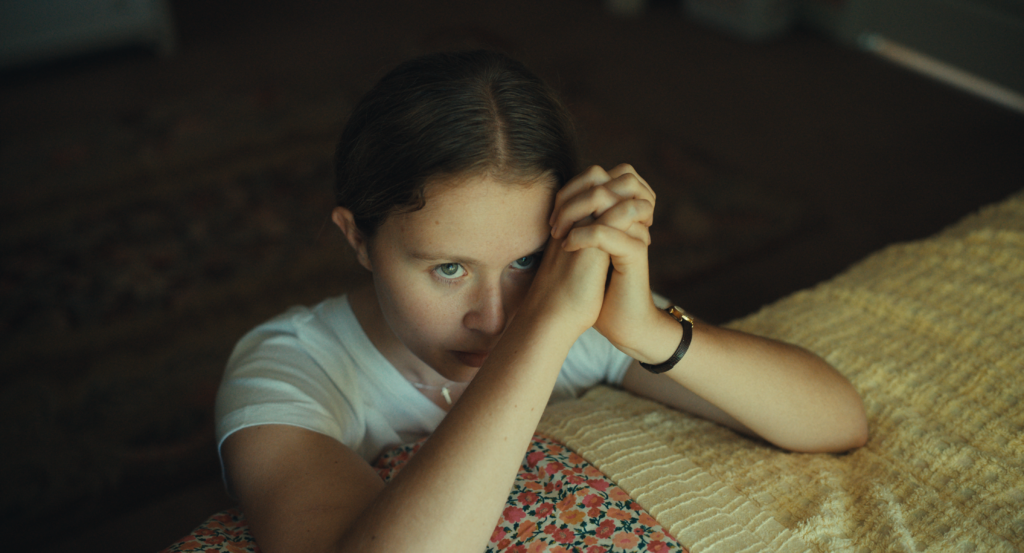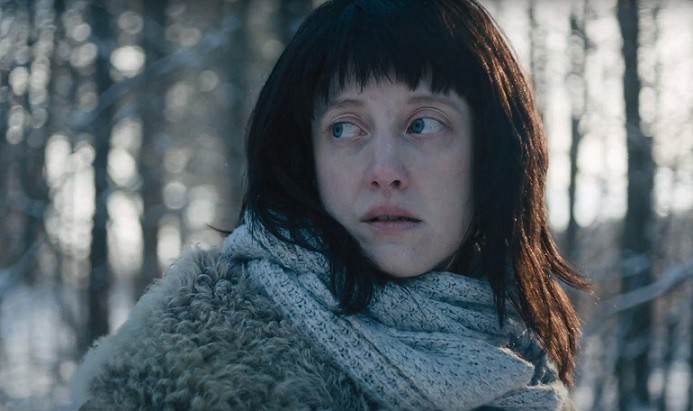Self-taught photographer and filmmaker Esther May Campbell has directed low-fi music vids, sex-education films, corporates for and about randy sailors, as well as Channel 4 dramas and the BBC’s “Wallander,” starring Kenneth Branagh. Her captivating cinema stories tell of lost souls, tragic lovers, limbo lives and daydreamers, all found in her self-penned short, the multi-awarded and BAFTA-winning “September.” Working with the Cube Cinema collective in her adopted home of Bristol, Campbell mobilizes a community cinema for children affected by the aftermath of the Haiti and Nepal earthquakes. (Press materials)
“Light Years” will premiere at the 2015 Venice International Film Festival on September 9.
W&H: Please give us your description of the film playing.
EMC: Mum is in the hospice and eight-year-old Rose wants to visit. But nobody will take her. Ever. Moving like a ghost at dawn, her father disappears from the isolated house. Meanwhile, sister Ramona waits for a boy who never comes and brother Ewan, anxious inside and online, communes with apparitions while the real world forgets him. But Rose reckons a family is like a constellation, all connected, even when they are actually light years away from each other.
Imagination protects from pain. When we are young, this is the golden rule that adult consciousness destroys. Nevertheless, that inner “child” can reappear — one has only to search for it in the lightness of a detail or a gaze. “Light Years” holds on to this. In its marvelous ambiguity of a phrase with double meaning, the ages of Rose, Ramona and Ewan are as “light” as well as “light years” distant from the loss of innocence. In this [way], the five members of the film’s family become a constellation of immaginific unconsciousness that only the pure gaze of eight-year-old Rose is capable of aligning. Sublime, tender and characterized by mature filmmaking, “Light Years” tackles the intimacy of a universality that no one can escape from.
W&H: What drew you to this story?
EMC: Ideas come in fragments. At first, I had a bit of plot — no more than a girl following a bus route to get to her mum. Then I had images: Floods in the edgelands [and a] limbo landscape, between places. I wanted to investigate where the natural world and the modern industrial meet.
I couldn’t shake two stories. One was twenty years ago. A friend had three cousins who were brothers. They were each hemophiliacs and had to have transfusions. One, having been given “contaminated” blood, contracted HIV. This young, young man — aged 15 then — knew his life would be short. His brothers’ [lives] would be, too.
Another story from a friend. His dad had Huntington’s. It ran in the family, but was often thought to be alcohol abuse, like “old Jimmy’s a bit of a drinker like Aunt Suzie,” when actually they had this inheritable condition. The friend was at the crux of working out if he wanted to be tested for the illness, which is 50% inheritable. If he tested positive, how would that make him feel about his life, having children, falling in love, the future, the past?
While gestating “Light Years,” I lived through a series of personal losses. I wanted to look at how to (keep) living when birth and death came so close. I wanted to make sense of the cruelty and joys of inevitable death. To look at how it can force one into the present moment while being forever interconnected to the past and future.
W&H: What was the biggest challenge in making the film?
EMC: From the outset, I wanted to ensure the process of making this film was just that: a real creative process. One that might challenge the sometimes brutal conventions of hierarchical film production. One that is tender and spacious and would allow soulful work to come out.
The greatest challenge is holding a place of vulnerability: a soft spot of the story when hard decisions are having to be made, [and] of holding a soft place where an actor may transcend. The hardest thing is always protecting the sweet spot in a brutal machine.
This was not always possible. However, we did five-day weeks. I foraged and shot footage before and after official production commenced. I recorded sounds before I shot a frame of film. The hardest thing is a big crew. Small crews enable freedom for the cast and the relationship between cast, performance, camera and light. They bypass a lot of the hierarchical politics because everyone takes ownership and has a growing compassion for one another’s roles.
W&H: What do you want people to think about when they are leaving the theater?
EMC: Mystery is great fuel. Moments that seem coincidental, unreal and magical make up everyday life. I want to offer mystery to an audience to get their pulses racing, and their unconscious owning images and sounds because it is processing what is unfolding exclusively to their own experience.
In story terms, the result may be that we must be with the unresolvable and in doing this, we open our hearts. If the film coaxes its audience to think about how we live with uncertainty when time is running out and what qualities of the heart we are to grow, then I have done my job.
W&H: What advice do you have for other female directors?
EMC: For years I framed myself as a director who happened to be female because although this wasn’t my direct experience (I was different, a minority), it’s where I wanted the industry to be. But it’s not, is it?
For example, I am being interviewed now not only about my film, but also my gender. Clearly there are not equal [numbers of] women to men writing and directing, and so stories that come from different voices across culture aren’t making their way onto the screens. This impacts culture itself. What we get is homogenized art — which isn’t art!
While men and women are equal, we are different. That is the point. [Why] else would it be so important for us to author stories? And so, women must not attempt to act like men or appropriate aspects of a patriarchal industry. Instead, we might slow down when others speed up. Watch when others shout. Consider when others race. Find a rhythm that is truthful and in sync with our hearts, minds and bodies to make work.
Never assume — nor take on others’ summations — that there is one way to make a film. Don’t believe in a film industry. Like any artist from any gender, find your own way. Be kind to the people you work with. And fuck everything else.







